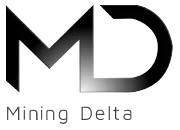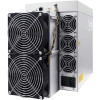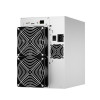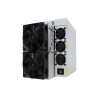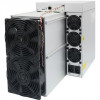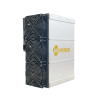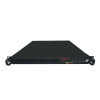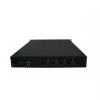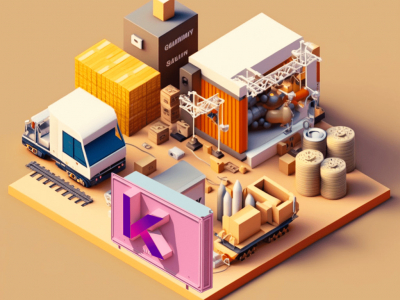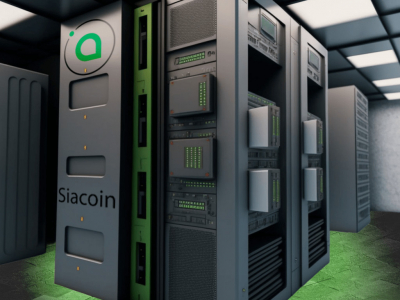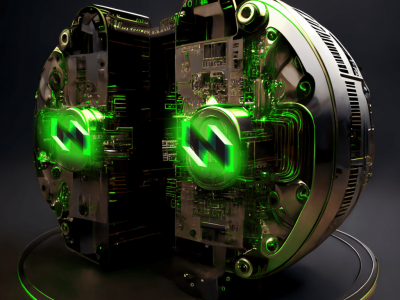
The History of Cryptocurrency Mining
Cryptocurrency mining began with the launch of Bitcoin in 2009. In the early days of Bitcoin, mining was done by individuals using their personal computers to validate transactions and secure the network. However, as the network grew and the difficulty of mining increased, the need for specialized equipment became evident. This led to the development of ASIC.
Asics vs. GPUs & CPUs
ASICs, or Application Specific Integrated Circuits, are specialized chips designed to perform a specific task. In the cryptocurrency world, ASICs have become increasingly popular as a means of mining digital currencies because they offer improved performance and efficiency compared to GPUs (graphics cards) and CPUs (computer processors).
ASICs are designed specifically for cryptocurrency mining and can perform the complex calculations required for mining much faster and more efficiently than GPUs and CPUs. This results in a higher hash rate, or the rate at which ASIC can solve the complex mathematical problems required to validate transactions on a cryptocurrency network and earn rewards.
ASICs are designed to operate 24/7 in a controlled environment and are much less likely to experience hardware failures than GPUs and CPUs, ASICs are much more expensive than GPUs and CPUs and require a substantial investment for individuals or businesses looking to get into cryptocurrency mining.
ASICs are designed for a specific task they make only one algorithm, for bitcoin it is SHA-256, which makes them less versatile than GPUs and CPUs. Cryptocurrency mining has evolved significantly since the early days of Bitcoin. The development of ASICs and the growth of large mining operations have changed the landscape of mining. Cryptocurrency mining remains an important component of many cryptocurrency networks and a potential source of passive income for individuals and businesses.
A mining farm
A mining farm is a collection of Asics or Rigs that work together to mine cryptocurrency. Asics are the computers that verify transactions on the blockchain and can also be used to mine new coins.
Cryptocurrency mining farms consume a considerable amount of electricity to power the Asics or Rigs that perform the calculations necessary for mining. However, this energy consumption can lead to high costs and environmental impact if the energy is produced from non-renewable sources.
Efficient power management can minimize costs and environmental impact while allowing the mining farm to operate optimally. It is important to monitor energy consumption in real time, use energy-efficient optimization technologies and equipment, and explore the use of renewable energy sources.
The use of renewable energy sources can not only reduce environmental impact, but also provide long-term economic benefits by reducing electricity costs. Effective electrical management and optimization is crucial to ensure the profitability and sustainability of a cryptocurrency mining farm.
The cost of electricity is not negligible, especially if you operate a mining farm. While some miners consider the cost of electricity to be negligible compared to their profits, others find it to take away their bottom line.
To calculate your electricity costs, you need to know how much power your ASICs use per hour (in watts) and how many hours they are running per day. You can find this information on the product page of each ASIC at Mining Delta
For example: An Antminer S19J uses 2950W/h when operating at full capacity; a Goldshell KD-BOX PRO uses 230W/h when operating at full capacity; and so on*.
You'll also need an estimate of how many days per year your machines will run uninterrupted (for example, 365 days). If there is downtime due to maintenance or repairs, this number should also include those days.
Green mining
Mining farms use clean green electricity, produced from renewable sources such as sun, wind, water and biomass. It does not emit greenhouse gases or toxic substances, making it more environmentally friendly than traditional energy sources such as coal, natural gas and oil.
The increasing use of green electricity in mining farms is helping to reduce greenhouse gas emissions and improve air quality. It can also lead to significant savings in energy costs, which is why mining farms are equipped, renewable energy costs tend to fall over time.
Ultimate cooling of a mining farm
Immersion is a cooling method used in data centers to cool IT equipment. In this method, computer equipment is immersed in a fluid (oil specially made for electronic components) that transfers the heat produced by the electronic components to an external cooling system.
Immersion cooling offers many advantages over traditional cooling methods such as fan removal and heat sinks. First, it allows electronic components to be cooled more efficiently, which can increase their lifespan and performance. In addition, it is quieter and requires less space than traditional cooling methods. They can be increased the hashrate power of your asics by increasing the frequency of the hearts of the asics chips.
Immersion cooling is especially useful in cryptocurrency mining farms, where Asics generate a considerable amount of heat. By immersing the Asics in a fluid, immersion cooling effectively cools the Asics to perform optimally.
Choose your Mining Pool
The first step in mining any cryptocurrency is to choose its mining pool. A mining pool is a group of miners who combine their computing power and share the mined cryptocurrencies. The advantage of a mining pool is that it guarantees you a certain amount of cryptocurrency for your investment in hardware and electricity. This can lead to lower returns on investment if you mine alone.
There are several mining pools, the best known of which are F2POOL, 2MINERS, HIVEON Pool. Hiveon is one of the largest players in the market and Hiveon was ranked second in terms of hashrate among RVN pools 2 days after launch, according to the miningpoolstats rate. Currently, the pool has 10.2,000 active users and its hashrate is 3.2 TH/s. The Ethereum Classic pool has acquired 16,500 active members and its hashrate is now 10.3 TH/s.
Hiveon pool covers 50% of obsolete shares, among other beneficial solutions for users. It's a brilliant choice for miners whose mining rigs are connected to the internet via Wi-Fi. The PPS+ reward distribution system provides miners with stable income. As soon as your mining farm becomes large, it is difficult to juggle its multiple pool, which is why Hiveon OS is a mining management platform for cryptocurrency mining. It is the most popular cryptocurrency mining system used by tons of people around the world. It allows miners to manage and monitor their mining rigs (ASICs, GPU platforms) from a single, centralized interface, making it easy to monitor hash rates, temperatures, miners, and other vital statistics; Restart, reset or update miners directly. Integration into the Hiveon operating system allows convenient extraction into the pool and management of devices via the Hiveon operating system. The platform supports many popular cryptocurrencies. (You want to use as a HiveON mining POOL, we can sponsor you with this link: HiveON POOL is receive $10 on your HiveON account).
Conclusion
In conclusion, the mining of crypto-currency in a mining farm is a complex process that involves reducing the costs of electricity especially with green electricity (photovoltaic installation, hydroelectric dam, geothermal) to cool the mining facilities (Asics, Rigs) with the ultimate solution of immersion cooling. To achieve better profitability, this is why mining farms are the greenest companies in the world.
